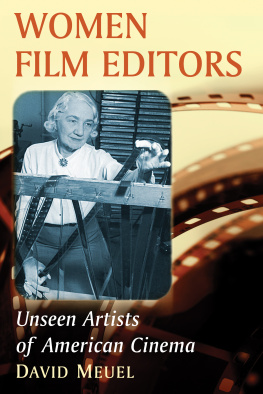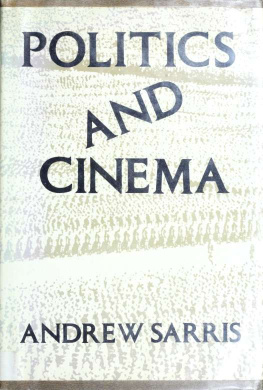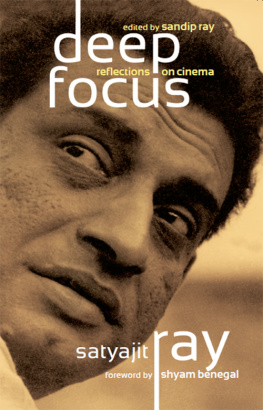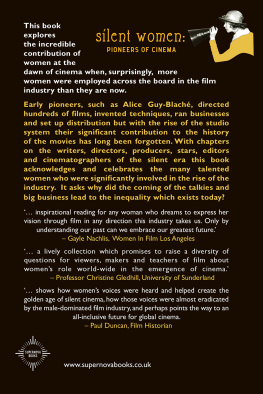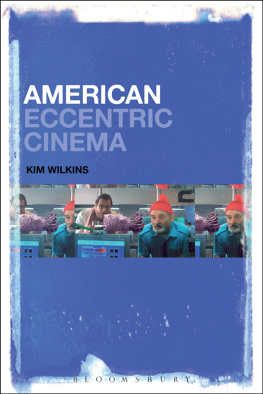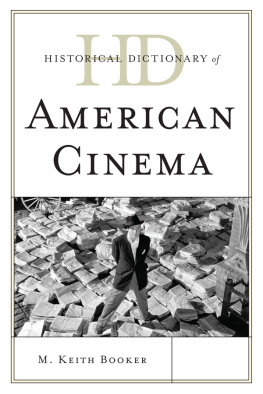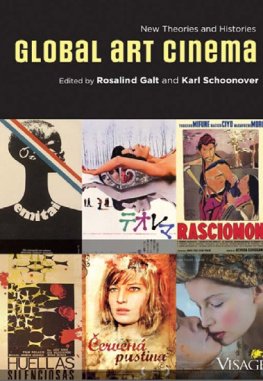Meuel - Women Film Editors: Unseen Artists of American Cinema
Here you can read online Meuel - Women Film Editors: Unseen Artists of American Cinema full text of the book (entire story) in english for free. Download pdf and epub, get meaning, cover and reviews about this ebook. year: 2016, publisher: McFarland & Co, genre: Non-fiction. Description of the work, (preface) as well as reviews are available. Best literature library LitArk.com created for fans of good reading and offers a wide selection of genres:
Romance novel
Science fiction
Adventure
Detective
Science
History
Home and family
Prose
Art
Politics
Computer
Non-fiction
Religion
Business
Children
Humor
Choose a favorite category and find really read worthwhile books. Enjoy immersion in the world of imagination, feel the emotions of the characters or learn something new for yourself, make an fascinating discovery.
- Book:Women Film Editors: Unseen Artists of American Cinema
- Author:
- Publisher:McFarland & Co
- Genre:
- Year:2016
- Rating:4 / 5
- Favourites:Add to favourites
- Your mark:
- 80
- 1
- 2
- 3
- 4
- 5
Women Film Editors: Unseen Artists of American Cinema: summary, description and annotation
We offer to read an annotation, description, summary or preface (depends on what the author of the book "Women Film Editors: Unseen Artists of American Cinema" wrote himself). If you haven't found the necessary information about the book — write in the comments, we will try to find it.
Meuel: author's other books
Who wrote Women Film Editors: Unseen Artists of American Cinema? Find out the surname, the name of the author of the book and a list of all author's works by series.
Women Film Editors: Unseen Artists of American Cinema — read online for free the complete book (whole text) full work
Below is the text of the book, divided by pages. System saving the place of the last page read, allows you to conveniently read the book "Women Film Editors: Unseen Artists of American Cinema" online for free, without having to search again every time where you left off. Put a bookmark, and you can go to the page where you finished reading at any time.
Font size:
Interval:
Bookmark:

Also by DAVID MEUEL
The Noir Western: Darkness on the Range, 19431962 (McFarland, 2015)
Women in the Films of John Ford (McFarland, 2014)

McFarland & Company, Inc., Publishers
Jefferson, North Carolina
LIBRARY OF CONGRESS CATALOGUING DATA ARE AVAILABLE
e-ISBN: 978-1-4766-2520-1
BRITISH LIBRARY CATALOGUING DATA ARE AVAILABLE
2016 David Meuel. All rights reserved
No part of this book may be reproduced or transmitted in any form or by any means, electronic or mechanical, including photocopying or recording, or by any information storage and retrieval system, without permission in writing from the publisher.
Front cover: Anne Bauchens, first female film editor to be both nominated for and win an Academy Award (Paramount Pictures); background 2016 iStock
McFarland & Company, Inc., Publishers
Box 611, Jefferson, North Carolina 28640
www.mcfarlandpub.com
Once again, to Kathryn
In the early 1920s, a seismic shift occurred in the business of making movies in America. Eyeing huge new revenue opportunities, film studios increasingly adopted the big business strategies and structures similar to those of the U.S. automotive and other manufacturing industries. To maximize output, they created assembly-line production operations and pressured behind-the-camera filmmakersthen accustomed to wearing multiple hatsto specialize in producing, directing, writing, editing, and other capacities. As these work roles became more specialized, they alsoand very curiouslybecame more gendered. Women, who until this point had been key contributors to the young industrys success, increasingly heard that they were too fragile, gentle, or otherwise poorly suited for this tough new high-stakes game and soon found work difficult to find. With only rare exceptions, female film directorswho had numbered in the dozens in the 1910svirtually disappeared for the next 60 years. Female producers faced a similar fate. And female film editors and assistants, who could easily land jobs in cutting rooms during the 1910s, were told that this work was now too taxing for them physically, passed over for advancement, and urged to give up their jobs so men could have them.
For these female film editors, however, there was one notable difference: a small, tenacious, and extremely talented number remained; rose to the top of their profession; and in some cases held positions of considerable power and influence within the industry for decades. By doing all of this, they also served as role models to another generation of women who entered the editing profession in the middle of the 20th century. These women, in turn, played critical roles in revolutionizing and revitalizing U.S. filmmaking in the 1960s and 1970s and inspiring hundreds of other women to become editors in the years that have followed.
Today, while female film producers, directors, cinematographers, and others remain relatively scarce in mainstream U.S. moviemaking, female film editors are plentiful, prominent, and proud heirs to a rich professional heritage. And, unlike their colleagues who produce, direct, or work as cinematographers, they have numerous female role models and the great advantage, to paraphrase Isaac Newtons famous line, of standing on the shoulders of the giants who came before them.
This naturally leads to some tantalizing questions. Howeven as women were pushed out of most other key behind-the-camera rolesdid a number of early female film editors manage both to survive and to thrive in an environment increasingly hostile to their gender? Who were these women? What drove them? What did they accomplish? How did they influence the development of filmmaking in the U.S.? And who were some of the younger women they inspired that came into their own during the mid20th century? What drove them? What did they accomplish? How did they influence filmmaking? And how did they, in turn, inspire many of the female film editors working today?
This little known but still very important story in the history of the U.S. film industry is what this book is about. The principal focus is on nine legendary women who played (and, in a couple of cases, still play) major roles in shaping the ways films have been made over the last 100 years. In addition, the book touches briefly on nine other women editors who also warrant special recognition for their distinctive and influential contributions to film.
By no means is this book intended to be the last word on these women in particular or on female film editors in general. It confines itself only to female editors working in the U.S. for all or much of their careers and to those working primarily on mainstream feature films produced either in Hollywood or in New York. Needless to say, there have been and are many other women working outside the U.S. and/or mainly on documentary films that have made major contributions as well.
Finally, this book is not a primer on the often misunderstood and greatly underappreciated art of film editing. Instead, it is mainly a collection of stories about accomplished, influential, and, in many cases, sadly overlooked female film editors intended for readers with a general interest in film and/or gender studies. Many good books have been written about the editors art, and 10 of the more popular and widely respected are listed at the back of this book. Those interested specifically in learning more about film editing are encouraged to check them out.

Although a book may only have one official author, numerous people help in many ways to bring each book project to completion. And again, I would like to thank my kitchen cabinet of friends and family members who have offered everything from their cogent insights on film to their great listening skills as this book development process has moved from conception to completion. Specifically, I would like to single out Elliot Lavine, Bob and Melanie Ferrando, Jimmy Meuel, Annette Hulbert, Peter Nelson, Natalie Varney, Joe Ercolani, Jim Daniels, and Paul Bendix. Id also like to extend a very appreciative thanks to Photofest, the New Yorkbased photo source that has helped me choose images for this and my last two film books. Finally, I would like to give a very special thanks to my long-time friend Scotty Martinson for devoting both her expertise and many hours of her time to editing the manuscript.

Long neglected, the contributions of women to the development of film as one of todays most powerful and pervasive communication mediums are finallyand with great energy and enthusiasmbeing recognized, studied, and discussed. Yes, it is about time that many of these women, especially the female film pioneers, get their due. And, in recent years, a number of new books focusing on women in directing, producing, screenwriting, and other behind-the-camera professions throughout film history have been released and well received.
Now, I believe it is time to turn the spotlight on the female editors. As film studies, their stories offer strikingly different perspectives from what we normally hear about how great movies are made and how the feature film has evolved over the last 100 years. As gender studies, they offer captivating and often rousing examples of strong, capable women who were determined to play important, influential roles in a male-dominated industry and, despite the odds, actually did it.
Next pageFont size:
Interval:
Bookmark:
Similar books «Women Film Editors: Unseen Artists of American Cinema»
Look at similar books to Women Film Editors: Unseen Artists of American Cinema. We have selected literature similar in name and meaning in the hope of providing readers with more options to find new, interesting, not yet read works.
Discussion, reviews of the book Women Film Editors: Unseen Artists of American Cinema and just readers' own opinions. Leave your comments, write what you think about the work, its meaning or the main characters. Specify what exactly you liked and what you didn't like, and why you think so.

